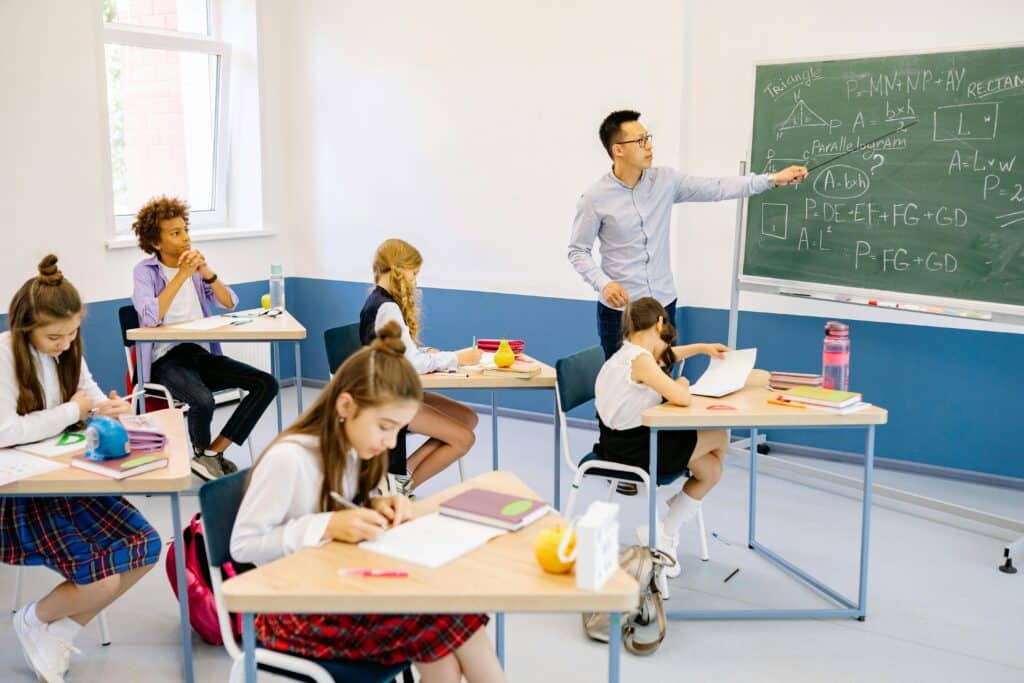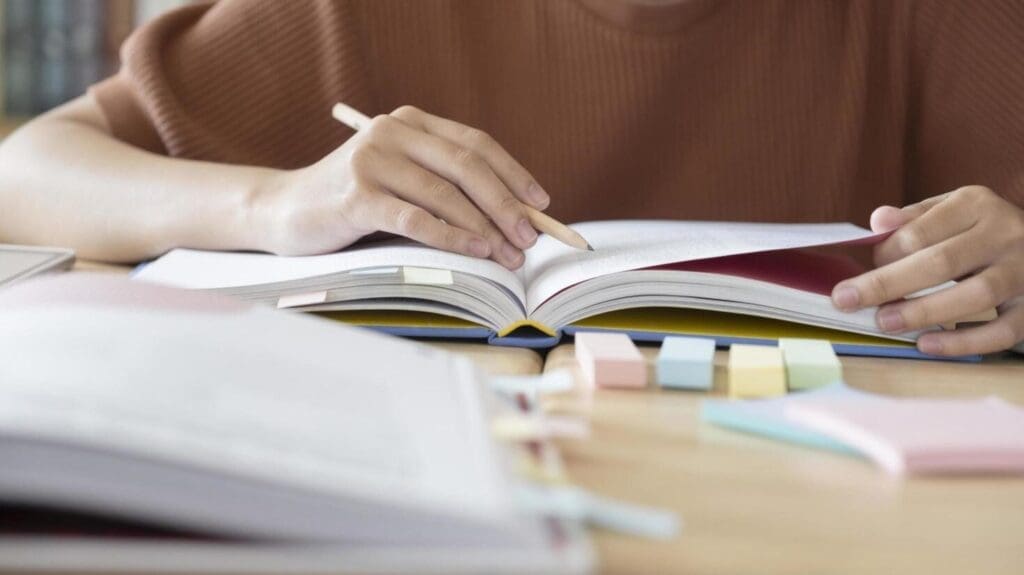Why Feedback Matters—and How to Make It Count
A Classroom Story

Ms. Rivera stood by her whiteboard, watching Jamal scratch out his answer. She could see he’d worked hard, but his solution didn’t follow the new method she’d taught. Instead of simply marking it wrong, she paused class, asked him to explain his thinking, and then showed him where his steps diverged—and how he could redo it. Jamal’s eyes lit up. He asked questions. By the next day, his work showed real improvement. That small moment—when feedback hit just right—changed how Jamal used feedback, cared about his learning, and believed he could improve.
Why Effective Feedback Counts
For teachers, feedback isn’t just about marking mistakes. It’s about guiding students toward growth. When feedback is done well, students actually use it—fixing errors, applying suggestions, and pushing their work further. If feedback is vague, late, or doesn’t connect to what students care about, they often ignore it. That’s why feedback is a core theme in the Scholarly Sphere: research shows it ranks among the most powerful influences on student achievement, with an effect size around 0.73 (Hattie 2023).
What Research Shows
Studies indicate that feedback improves self-efficacy, motivation, and academic performance when it is specific, frequent, and forward-looking (Brookhart 2017). Effective feedback combines three elements: “feed-up,” which clarifies the goal; “feed-back,” which identifies progress so far; and “feed-forward,” which points to next steps (Sadler 2010). When teachers consistently include those elements, students are far more likely to act on their feedback instead of viewing it as a final judgment.
Connecting to Our Resources
Because our blogs and articles about education and learning and school focus on practical ways teachers can improve learning, it’s important to explore concrete strategies. Teachers need methods that fit busy schedules yet still spark change. Research confirms that even small shifts—like giving comments the same day or asking students to reflect—can double the impact of feedback on achievement (Brookhart 2017).
10 Practical Ways Teachers Can Give Feedback Students Will Use

Providing feedback that students actually use is one of the most effective ways to improve learning. Research shows that specific, timely, and actionable feedback can significantly enhance student outcomes. Below are ten evidence-based strategies to help teachers deliver feedback students can apply to their work.
Table: 10 Feedback Strategies for Teachers
| Strategy | Description | Classroom Example | Research Source |
|---|---|---|---|
| 1. Timely Responses | Provide feedback as soon as possible to maintain relevance. | After a math quiz, the teacher spends 10 minutes reviewing errors with the class. | Brookhart 2017 |
| 2. Clear Goals | Link feedback to learning objectives to show purpose. | Teacher posts learning targets and refers to them in comments. | Sadler 2010 |
| 3. Two Stars & a Wish | Give two positive points and one suggestion to balance praise and improvement. | Highlight strengths in an essay and suggest one area to improve. | Petty 2021 |
| 4. Action Steps | Give concrete steps for students to follow. | “Revise your thesis statement and check paragraph structure.” | Hattie & Timperley 2007 |
| 5. Student Reflection | Ask students to summarize feedback and plan revisions. | Students write a reflection after receiving comments on a project. | Shute 2019 |
| 6. Peer Review with Guidance | Teach students to give constructive feedback to each other. | Students use rubrics to review peers’ essays. | Topping 2018 |
| 7. Audio or Video Feedback | Record short notes so students can hear and see explanations. | Teacher records a 2-minute video commenting on a presentation. | West & Turner 2016 |
| 8. Conferencing | Hold one-on-one meetings for personalized guidance. | Brief conferences to discuss a research project. | Brookhart 2017 |
| 9. Visual Cues | Use colors or symbols for quick recognition of feedback. | Color-coded annotations in student essays (green=good, yellow=revise). | Carless 2015 |
| 10. Feed-Forward | Focus on how current work connects to future tasks. | Suggest improvements for the next assignment, like “Use more primary sources.” | Sadler 2010 |
1. Timely Responses
Why It Works: Feedback is most effective when given promptly. Immediate responses help students link their actions with the feedback.
Example: After grading a quiz, Ms. Lee reviews mistakes in class the same day. Students correct errors while the material is fresh.
Insight: Brookhart (2017) emphasizes that quick feedback encourages students to apply suggestions immediately.
2. Clear Learning Goals
Why It Works: When feedback aligns with clear objectives, students understand the purpose of tasks and how to improve.
Example: Mr. Patel posts the learning objectives at the start of class and refers to them in his comments.
Insight: Sadler (2010) notes that clarifying goals (“feed-up”) helps students understand what success looks like.
3. Two Stars & a Wish
Why It Works: Balancing positive reinforcement with constructive suggestions keeps motivation high.
Example: Ms. Thompson tells a student: “Your argument is strong and your examples are clear. Next, add more transitions between paragraphs.”
Insight: Petty (2021) shows this approach supports improvement without discouraging students.
4. Actionable Steps
Why It Works: Students often need guidance on exactly what to do next.
Example: Mr. Johnson provides a bullet-point list of revisions for an essay.
Insight: Hattie & Timperley (2007) stress that actionable feedback answers three key questions: Where am I going? How am I doing? What next?
5. Student Reflection
Why It Works: Reflection encourages metacognition and ownership of learning.
Example: After feedback on a science project, students write what they will change and why.
Insight: Shute (2019) highlights that reflecting on feedback deepens understanding and planning.
6. Peer Review with Guidance
Why It Works: Peer feedback fosters collaborative learning and critical thinking.
Example: Students exchange essays and use a rubric to provide structured comments.
Insight: Topping (2018) finds peer review effective when students are trained to give constructive, specific feedback.
7. Audio or Video Feedback
Why It Works: Multi-sensory feedback can be clearer and more engaging than text alone.
Example: Ms. Garcia records a short video explaining strengths and areas to improve in a presentation.
Insight: West & Turner (2016) found students often prefer audio/video feedback because it conveys tone and personal connection.
8. Conferencing
Why It Works: One-on-one meetings allow teachers to personalize feedback and answer student questions.
Example: Mr. Carter holds 5-minute conferences during independent work to discuss progress.
Insight: Brookhart (2017) highlights that conferences clarify expectations and target individual student needs.
9. Visual Cues
Why It Works: Symbols or color codes quickly convey feedback, reducing reading effort and confusion.
Example: Ms. Evans uses green for strong points, yellow for minor revisions, and red for major issues.
Insight: Carless (2015) notes that visual cues improve efficiency and student understanding of feedback.
10. Feed-Forward
Why It Works: Focusing on future improvement fosters a growth mindset.
Example: Mr. Lee provides comments that guide how students can do better on the next essay, e.g., “Include more primary sources next time.”
Insight: Sadler (2010) emphasizes “feed-forward” to encourage students to apply learning to future tasks.
Key Takeaways for Teachers
- Consistency matters: Provide feedback regularly and predictably to maintain trust and engagement.
- Student voice is crucial: Encourage reflection and peer involvement to make feedback interactive.
- Actionable guidance beats praise alone: Always include clear next steps for improvement.
Using these ten strategies, drawn from our blogs and articles about education and learning and school, teachers can transform feedback into a tool that actively drives student growth. Combining quick interventions like visual cues with deeper approaches like conferencing ensures feedback is meaningful and applicable.
Making Feedback Work in Your Classroom
Summarizing the Strategies

Effective feedback is more than a grade or a comment—it’s a tool to help students grow. In this article, we explored ten strategies that teachers can use to ensure their feedback is practical, actionable, and motivating. From giving feedback promptly to using visual cues, each strategy encourages students to understand their learning, reflect on it, and improve their work.
Teachers can mix quick, simple approaches with more involved strategies:
- Quick wins: visual cues, two stars and a wish, audio or video messages.
- In-depth approaches: one-on-one conferences, peer review with guidance, and feed-forward.
By blending these methods, teachers make feedback both accessible and meaningful. Research consistently shows that when feedback is clear, specific, and timely, students are more likely to use it and improve their academic performance (Hattie 2023; Brookhart 2017).
Applying Feedback Daily
Implementing these strategies does not require huge amounts of extra time. Teachers can:
- Schedule short conferences during independent work periods.
- Use color codes or symbols when annotating work to save time.
- Encourage students to reflect on feedback through exit tickets or brief journals.
Even small adjustments can make a big difference. When feedback becomes part of the classroom routine, students develop habits of self-assessment and proactive learning. They begin to see feedback as a guide rather than a judgment.
Supporting Student Growth
Our blogs and articles about education and learning and school emphasize practical ways teachers can help students act on feedback. By providing actionable steps, clarifying learning goals, and fostering reflection, teachers help students develop independence and confidence in their abilities. Research shows that structured feedback contributes to higher achievement, motivation, and engagement in learning (Sadler 2010; Shute 2019).
When feedback is consistent and connected to clear goals, students learn to track their own progress. Peer reviews and student reflection promote collaborative learning, while feed-forward prepares them for future challenges. Over time, these habits cultivate a classroom culture where feedback is welcomed and applied, not ignored.
Moving Forward
Using effective feedback strategies transforms teaching from simply evaluating work to actively guiding student growth. Each method—whether it’s a quick visual cue or a detailed conference—supports the student’s next step in learning.
As teachers reflect on these ten strategies, they may ask themselves: How can I adapt my feedback practices to ensure every student not only receives comments but actually uses them to improve?
Works Cited
Turner, William, and John West. “Online Video Assessment and Feedback in Higher Education.” International Journal of Teaching and Learning in Higher Education, vol. 25, no. 3, 2013, pp. 288–296. https://www.isetl.org/ijtlhe/pdf/IJTLHE1626.pdf
Brookhart, Susan M. How to Give Effective Feedback to Your Students. 2nd ed., ASCD, 2017. https://www.ascd.org/books/how-to-give-effective-feedback-to-your-students-2nd-edition
Carless, David. Feedback in Higher and Professional Education: Understanding It and Doing It Well. Routledge, 2015. https://www.routledge.com/Feedback-in-Higher-and-Professional-Education-Understanding-it-and-doing-it-well/Boud-Molloy/p/book/9780415692298
Hattie, John, and Helen Timperley. “The Power of Feedback.” Review of Educational Research, vol. 77, no. 1, 2007, pp. 81–112. https://journals.sagepub.com/doi/abs/10.3102/003465430298487
Petty, Geoff. Teaching Today: A Practical Guide. 5th ed., Nelson Thornes, 2021.
Sadler, Royce D. “Beyond Feedback: Developing Student Capability in Complex Appraisal.” Assessment & Evaluation in Higher Education, vol. 35, no. 5, 2010, pp. 535–550. https://www.tandfonline.com/doi/abs/10.1080/02602930903541015
Shute, Valerie J. “Focus on Formative Feedback.” Review of Educational Research, vol. 78, no. 1, 2008, pp. 153–189. https://www.academia.edu/63114547/Focus_on_Formative_Feedback
Topping, Keith J. “Peer Assessment: Learning by Judging and Discussing the Work of Other Learners.” Interdisciplinary Education and Psychology, vol. 1, no. 1, 2017, p. 7. https://discovery.dundee.ac.uk/en/publications/peer-assessment-learning-by-judging-and-discussing-the-work-of-ot



Pingback: 5 Essential Grading Tips for Busy Educators
Pingback: Free Teaching Resources for Efficient Classroom Planning
Pingback: 10 Ways Teachers Can Boost Student Motivation and Engagement Today -
Pingback: Technology in Education vs. Traditional Methods: Which Produces the Highest Test Scores? -
Pingback: Parent Survival Guide: Keeping Kids Engaged—and Off Roblox—With Gamified E-Learning -
Pingback: The $50 DIY Smart Classroom: Viral Gadgets You Can Build Over the Weekend -